- January 18, 2013
- Posted by:
- Category:BLOG, India Investment Conference
India and the New Financial Order
January 11th 2013, Mumbai
CFA Institute, IAIP and NISM organized the Third India Investment Conference in Mumbai on January 11th 2013. With excellent line up of speakers and panelists the conference received a good response and was well attended. The event started with opening comments from John Rogers, CFA, President and CEO of CFA Institute and Sunil Singhania, CFA, President IAIP. This was followed by inaugural address by Prashant Saran, Whole Time Member of SEBI, and stimulating sessions by Roger Urwin, CFA, Global Head of Content, Towers Watson, Satyajit Das, Author & Consultant, S Das & Associates and Aswath Damodaran, Professor of Finance at Leonard N Stern School of Business, New York University, a panel discussion on investment outlook for coming year and finally closing comments by Paul Smith, CFA, CEO CFA Institute APAC Region. Panelist included Ramdeo Agrawal, Joint Managing Director, Motilal Oswal, Ridham Desai, Managing Director, Morgan Stanley, Sunil Singhania, CFA, Head Equities, Reliance AMC and Prashant Jain, CIO, HDFC AMC. The event flow was managed by Anil Ghelani, CFA, Conference Chair and sessions moderated by Navneet Munot, CFA, Director IAIP, Ajit Ranade, Chief Economist, Aditya Birla Group, Ramesh Damani, Member BSE and Prabhat Awasthi, Managing Director & Head India Equity, Nomura.
The CFA Institute now has more than 112,000 members across 137 countries.

IAIP has around 1000 members and more than 20,000 candidates the 3rd largest pool. According to John Rogers, CFA, over the last few years there has been breach of ethics and codes in the world of finance and investment. As a result large financial institutions and financial executives have been brought down by regulators. The visible costs to the industry have been layoffs and loss of public & investor confidence. However, there are other real problems in the making for the investors. They have become more defensive, fearful and are thinking their investments over short term. These can have long, propounding impact for the individuals in meeting their savings needs and filling the gap in the long run. He invited investment professionals to take personal responsibility for restoring confidence and wining back trust of the investors. These could be done through (1) education for investors, general public and fellow professionals, (2) encouragement of ethical behavior, and (3) enforcement of rules through visible and aggressive actions.
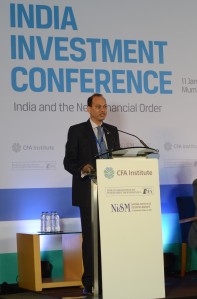
Sunil Singhania, CFA, President IAIP, apprised the audience that IAIP represented the entire fraternity of investment and finance professionals. Through its Advocacy Committee it has been actively providing unbiased and independent comments to regulators whenever they have invited inputs from the industry over various concept or discussion papers. Apart from this it is continuously working on adding value to its members, profession and industry. India is important geography for CFA Institute and same could be gauged from the fact that its Board of Governors had their first board meeting in India.
Opening Address
Address by Prashant Saran, Whole Time Member of SEBI…

Instead of running through various things that Securities Exchange Board of India (SEBI) has done to improve the Indian securities market over the last two decades in the areas of screen based trading, dematerialization, reducing settlements to T+2 days, guidelines for mutual funds, takeover codes, corporate disclosures etc or last one year like reducing the time for listing of IPOs to 12 days, or making ASBA compulsory, or asking asset managers to introduce direct plans, or introduction of basic demat accounts with minimal charges etc, Prashant Saran, Whole Time Member, SEBI, showed a “Method in the Madness” while issuing too many circulars & policies. The regulator was either trying to cut cost of products & service, or time of delivery & processing or cut risk of product or system, or boost transparency & information content or increase penetration of financial products.
He raised simple questions for the industry like Are we being terribly original in changing or shaping the industry? Or are we the only industry to realize that one must cut costs, time & risks and bring transparency into the system or go out and include the masses? Answering in a negative he compared with other industries like travel, telecom and metals & mining. Taking from an account of a traveler from Turkey to India in late 19th century when it took 6 months of adventurous and risky journey by land, the travel industry has come a long way. Earlier only few and rich could afford to travel now poorest of poor could do so. Now even a 10-15 minutes delay results in dissatisfaction for travelers when earlier there were no time table available or schedules met. Transformation in communication industry too has been tremendous. There was a time when only kings & noble could afford send letters on Chaper (horse) as you have to keep horse and attendant. Now anybody could send the same as the costs have come down. Earlier it used to take weeks to deliver letter, now the mails & messages are instantaneous. There was risk of the documents getting intercepted or person carrying it killed. Now the worst fear is the latest computer virus. Likewise for the metals & mining industry where it used take weeks to extract sizeable quantity. Now modern blast furnace produce steel in six hours. In mining death of workers was a norm. Now it’s news. Technology was a family secret. Now the same is available in text books. Precious metals were owned by few now they are owned by many fulfilling the criteria of inclusion.
Saran who has been 3-1/2 years in the securities market says people in the industry tell him that financial products are not pull products they are push products meaning they are not bought but are sold. (a) They are intangibles. However, the same is true about software, music etc. How can they be different? (b) They are difficult to value. You need high speed computers to arrive at a price. However, valuing arts could not be done even with computing tools. (c) Payoffs are in future. So is the case with any product – burger with expected delivery in 15 minutes or cars which could be in weeks. (d) Financial products are complex. So what about smart phones or computers? (e) Financial products are based on trust. So isn’t complex medical surgery?
He concluded the session by asking whether there are any policy imperatives or lessons to be learned from all these? Yes we have. (1) First is the constant effort in standardization of products. Railways initially operated with lines in multiple gauges but later converged to three and then again to single broad gauge. As a result trains could move across the nation cutting costs and improving efficiency. Post GFC there is better understanding and efforts to standardize CDS for example. (2) Labeling on the products like it contains so much fat, sugar etc, (3) suitability & warnings like in case of tobacco or for people having diabetes, (4) approvals like FDA which looks at toxicity of drugs etc, and lastly (5) the act of selling & advising drawing analogy between computers and financial products.
Investing in the new Financial Order
Session by Roger Urwin, CFA, Global Head of Investment Content, Towers Watson
Moderated by Navneet Munot, CFA, Director IAIP

What is common between Cricket and Financial Markets? Nobility and Patience. Financial markets have little of the latter. Roger touched upon the intensifying challenges for asset allocation and investment strategy with divergence in the macro view the first scenario being “Bumpy path to recovery ” wherein the developed world ultimately gets back to the normal growth and second being “Financial Repression” resulting into sustained poor outcomes for the world economy. Politics only compounds the complexity further. The way to hedge for these two scenarios is to keep refreshing the views keeping in mind the implications over 5 to 10 years.
One of the ways to build a strategy by taking into account the wide range of drivers could be categorization of sources of returns into (1) traditional beta called bulk beta, (2) smart beta where the investor need to compete for gains by exploiting valuations skillfully and lastly (3) alpha which are based on the best ideas (from idiosyncratic group) . Asset managers in the new normal seem to pay more emphasis on smart beta instead of alpha as it requires lighter governance and yet could make up for lower returns. Various kinds of strategy like active versus passive, core and satellite, index tilted towards value or momentum, are all efforts to use capital efficiently.
The pension industry is facing its own challenges based on lower asset return, falling discount rate, credit risk of sovereign bonds, lack of appropriate hedging assets, legal challenges, governance etc. Their strategy has become more defensive and more diversified. There is move from defined benefits to defined contribution model. Risk is revisited with newer (a) framework having regard to all its sources and the time horizon, (b) governance approaching risk with the right resources, and (c) effective tools accessing security level details & real-time delivery. Risk is now everybody’s responsibility and its management of risk that is emphasized rather than just measurement.
Winston Churchill said “Democracy is the worst form of government except all the others that have been tried.” Likewise the old model of market fundamentalism is a suspect having shown its limitations. But capitalism remains the dominant ideology. The for-profit corporation remains dominant but alternatives are getting some traction as normal corporation are influenced by social responsibility. Financial capitalism, of which hedge funds and private equity are the dominant agents, is giving way to fiduciary capitalism with the asset owner boards and teams. Sustainability is gaining importance through concepts like ESG (Environment Social Governance) and PRI (Principally Responsible Investing). Funds are moving from traditional strategy to integrated sustainable strategies. The broken spoke between society, governments, companies and asset owners is getting connected and integrated.
End of Growth – Investment Strategies for Survival
Session by Satyajit Das, Author and Consultant, S Das & Associates Pty Ltd
Moderated by Dr. Ajit Ranade, Senior President and Chief Economist, Aditya Birla Group
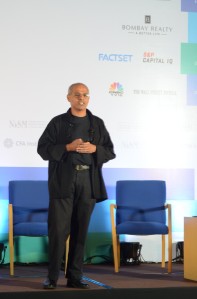
Satyajit Das started his session with doubts on the so called recovery which is driven by government spending and low interest rates. Even an electric shock to the dead body shows signs of recovery! Between 2007 and 2012 central banks have bloated their balance sheet manifold. Europe by 146%, US 223%, England 362%, China 151% and so on. The amount bought is equivalent to buying 50” plasma screen for each person on earth. Growth will falter as soon as the stimulus is withdrawn. The rate policy too is ineffective. Henry Morgenthau, Secretary of the Treasury during Roosevelt administration in 1939 had said that “We are spending more money than we have ever spent before, and it does not work. After eight years we have just as much unemployment as when we started, and an enormous debt to boot”. The central bankers have not learned from him. The present economy represents neither those proposed by Keynes, nor Friedman nor Austrian School. It instead represents “Botox” economy. Botox is made of highly toxic protein for temporary cosmetic changes and where fundamentally nothing changes. Likewise in Financial Botox the government infuses cheap and easy money, but nothing fundamentally change. Das expressed concerns on the levels & amounts of sovereign debt, emerging market slowdown, policy and political impotence all of which could lead to societal stress. When Argentina defaulted, its outstanding debt was $82bn. But now the debt of developed markets combined runs into massive amounts – $5000bn. Debt by sovereigns is rarely paid. But it needs to be serviced to maintain confidence in the system. Based on the debt sustainability measure US needs to grow between 2.5% to 3.0% to maintain Debt/GDP ratio at present levels. Greece has to grow by 40% indefinitely!
According to Das Europe faces more of solvency risk than liquidity risk. The options of debt reductions viz. write downs and austerity are both difficult as the former destroys the banking system and latter is self-defeating in terms of growth and employment. It has number of options for liquidity support EESF, ESM, LTRO, OMT etc. But the question remains is there enough money? And does it address growth and competitiveness. As for Germany the only strongest of economy breaking out of Euro Zone will cost anywhere between $500bn to $700bn nearly 30% of its savings pool. Its dilemma – if you stay the beast eats you, if you run it chases you!
Uncle Sam’s broke too. Since 1981 the US debt has grown more than 15 times while the population is up just 35%. If the figures of the US were to be explained in terms of household family budget, then the annual income is $21,700, annual spending is $38,200, credit card bill is $16,500 and total outstanding debt is $142,710. Budget cuts are estimated at just $385. The US needs serious reforms. Federal tax revenues form just 15% of the GDP down from 18-19% a few years back and compared to 37% in Germany, 34% in UK and 28% in Japan. Only 3% of tax payers pay bulk of the taxes – 52% of total collections; 45% don’t pay taxes.
The Chinese economic model was based on net exports, investments which were 55% of its GDP and consumption. The massive investments have already created ghost cities and malls, 60mn empty apartments forming 15% of dwellings, excess capacities in cement which greater than those is US, Japan and India combined and idle steel capacities which is greater than those in Japan and S Korea. The miraculous growth has been stimulated by creation of new loans which of late has come down from 42% of GDP in 2009 & 2010 to 20-25% in 2012 resulting into dip in GDP growth rates. However if one were to take into account bad debts where estimates range from 10-25% or 3 to 10% of GDP, then the growth rates will be much lower. Then there is fall in trade surplus and the massive investments of $1.0trn in sovereign debts of developed economy which cannot be liquidated easily. China seems to have stepped on bounding mines, which do not explode on stepping but do when you lift the leg after stepping on it.
When pressed to speak on India he made an analogy with the cricket team where the past success had been on few great players. The odds are against the Indian team for winning but Indians typically are in denial mode and blame everybody from selectors to administration to leadership or even media! Advice for investors (1) it’s a volatile environment and mostly trading market so investors will have to take short term bets, buy and hold may not work (2) One can make money in any market. All one has to do is to identify what things work (3) if you think the policy makers in the end will succeed than one should buy equities and if you think the policies won’t work which means it will trigger inflation than one should buy hard assets.
Investment Philosophies: Successful Investment Strategies and What it Takes to Make Them Work
Session by Aswath Damodaran, Professor of Finance, Leonard N. Stern School of Business, New York University
Moderated by Ramesh Damani, Member BSE

At the first India Investment Conference in January 20111, Professor Aswath Damodaran had held sessions on valuations of equities. So this time around he chose to present on Investment Philosophies. An Investment Philosophy, unlike an investment strategy, is a set of core beliefs that you can go back to in order to generate new strategies when old ones do not work. Investment strategy is a way of putting into practice an investment philosophy. It is important for an investor to understand which philosophy is right for one and depends on one’s strengths and weakness, temperament etc. Else one will be easy prey for charlatans claiming magic formulae or selecting inappropriate strategy, or switching strategies. He classified investment philosophies into (1) intrinsic value investor, (2) intrinsic growth investor, (3) technical analyst or chartist, (4) arbitrageur, (5) information trader, (6) market timer and (7) efficient marketer.
Investors need to look and appreciate both value and price instead of relying too much on only one aspect. You have to be right about both the value and the price. Value is determined from cash flows, growth and risks (through discount rates). Determining price is complex interaction of demand and supply and is driven by multiple factors like liquidity, macro, moods, momentum etc. To illustrate this point he cited the example of Apple and why he chose to sell it (please refer to his blogs as well). Apple typically had attracted growth investors over last few years later joined by momentum investors. However, recently Apple under the pressure of investors to return cash chose to declare dividends ($20bn as against Aswath’s expectation of share buybacks worth $60bn). Hence there was a change in the company’s policy and the professor lost faith in the valuation process. Now there will be constant fight between two types of investors – growth and dividend seekers – which will result into increased price volatility.
Though Aswath has classified investment philosophies into various categories he thinks putting investors into value and growth camps is too restrictive, rigid and ritualistic. Growth investors typically have ability to value growth assets by studying the potential of newer products or industries. While value investors are good at assessing value of existing assets or mature companies. It’s the question of value-price gap firstly the uncertainty about the magnitude of the gap and secondly the uncertainty about gap closing in the future.
Professor divided value investors into passive screeners, contrarian investors and activist value investors. The passive screeners work on typical screens like Ben Graham’s 10 criteria for generating investment results. The contrarian investors usually will buy stocks which others are selling or put in other words buy the losers. The third category target worst managed companies where the “optimal” value could be much higher than “status-quo” value and play an active role in closing the value gap. The common determinant for success for all the three approaches is patience. Apart from these passive screeners need to diversify their portfolios, contrarian investor need to be self-confident & have stomach for short term volatility and activist needs to have lots of capital for sizeable stake in companies, ability to form coalitions with other investors and thorough knowledge of where to derive value from the business.
In the rapid fire type of questions from Ramesh, Aswath was quick in picking ROCE over ROE as the latter can look good by leveraging, pick Facebook at $18 per share (or $70bn) as at that price he could live with Mark Zuckerberg’s craziness (like Instagram purchase without board discussion) besides good potential, every number should have story behind for decision making, how little people talked about selling; hence imbibe discipline to revalue portfolio based not your purchase price but independent of it every year and take buy or sell decision. On asked for the most dangerous words he said “I got it right”.
http://people.stern.nyu.edu/adamodar/pdfiles/country/invphil1day.pdf
Executive Panel: India Investment Outlook
Members for Panel Discussion:
Prashant Jain, Chief Investment Officer, HDFC Asset Management Company
Ramdeo Agrawal, Joint Managing Director, Motilal Oswal Financial Services
Ridham Desai, Managing Director, Morgan Stanley India
Sunil Singhania, CFA, Head Equity, Reliance Capital Asset Management Co
Moderated by Prabhat Awasthi, MD and Head of India, Nomura India

Keeping with its past tradition the third India Investment Conference too had panel discussion for the Indian equity markets. As mentioned earlier the panelist included, Prashant Jain, ED and CIO, HDFC MF, Ramdeo Agrawal, JMD of Motilal Oswal Financial Services, Ridham Desai, MD and Head of India Research at Morgan Stanley, and Sunil Singhania, Head – Equities at Reliance MF. Prabhat Awasthi, MD and Head of India, Nomura was the moderator. While nobody expected CY12 to end higher by 23% the panelists were bullish on Indian market for 2013 due to multiple reasons like fall in interest rates, valuations and foreign liquidity being few of them. The main concerns of the panelists were higher fiscal deficit & current account deficit, oil price and currency movements. The following are the excerpts of the panel discussion (in order of flow of questions asked to the panelist):

Ramdeo Agrawal: Earning growth is stable, valuation reasonable, liquidity strong and do or die performance attitude at Delhi. Opinion too is changing and people are turning more positive on the market. Even after considering sharp depreciation of Rupee last year, Rupee has depreciated by mere 1.5% per annum against the dollar in last ten years against Sensex return of 17-18%, thus providing dollar return of 15-16% over last ten years. In addition around 55-60% of the fund managers in India have out-performed Sensex by good margins. He is bullish on sectors like financial, consumer staples & discretionary especially the monopolistic ones. He will avoid low quality companies which are at the mercy of government (like in infrastructure). PMS and wealth management concepts will gain acceptance as rich families begin to realize that it is better to pay 1.5% management fees to professional money managers than rely on their accountants to take decision.

Ridham Desai: The three main ingredients for markets to do well are 1) good valuations which currently are in bottom deciles, 2) liquidity from the global sources, and 3) expansion in profit margins where again the cycle seems to have bottomed. The NIFTY is at the same level as in 2007-2008 but the P/E multiple is much lower. He expects 100bps improvement in net margins. As per him corporate net profit to GDP ratio hit high of 7.5% in 2008 from 2.5% in 2002. At present it is around 5% leaving scope for the expansion. He is sector agnostic and wants to buy growth at reasonable price for long term. He believes that cyclical would outperform and would take indirect exposure to infrastructure through cement and steel companies. Consumer related stocks are expensive.

Sunil Singhania: Equity as an asset class is heavily under invested. P/E multiples are lower as growth was lower. However, markets look at future. With both inflation and interest rates likely to fall and reforms process being undertaken by the government, one should be overweight equities. The loss in US bond in the last 3 months alone has been more than gains made the whole of last year. Around 50% of the EBIDTA of many companies have been eaten away by interest. With reduction in interest rate PAT margin would increase. His approach will be stock specific than sector specific though he continues to like sectors like Pharma and IT (where sector P/E is lower than market P/E). Because of bad experience in recent past one tends avoid stocks in infrastructure. However, some of the companies in the sector especially utilities are available at less than half the multiples at the peak and with operating plants. Flows and currency are the risks for the market. However, the bigger risk is not investing in equities.

Prashant Jain: We as a country have typically changed during crisis and pushed reforms. There is a sense of urgency in the government now and things are moving. Reduction in subsidies and coal price pooling are future catalysts. The P/E multiples always go up to the touch the peaks before they start falling down to lows. Hence there is lot of scope for market P/E multiple to expand. However, there is no room for P/E expansion in consumer sector. The quality premium – difference between high P/E & low P/E – is high and the same will come down. In 2007-08 markets were ahead of reality, now they are behind. Easy money in primary markets is over. However, he welcomes supply of good stocks. As far as corporate governance was concerned the levels of disclosure & transparency have gone up over the last 20 years and it’s up to the investors to select or avoid poor companies. The key risk for the markets will be increase in crude oil prices.
Contributions from: Chetan Shah, CFA, Jignesh Kamani, CFA, Subhash Iyer and Rajni Dhameja
Photographs from: CFA Institute

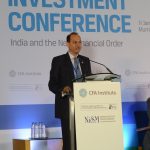

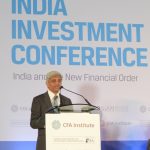



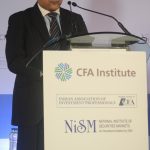














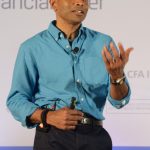















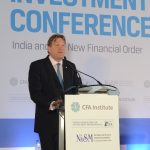



You can look at all the tweets from conference on Twitter at #iic13
Hi! I know this is kinda off topic however , I’d figured I’d ask.
Would you be interested in exchanging links or maybe guest authoring a blog post or
vice-versa? My website goes over a lot of the same topics as yours and I think
we could greatly benefit from each other. If you are interested
feel free to shoot me an email. I look forward to
hearing from you! Terrific blog by the way!
Views presented in India Investment Conference are a must read for a finance professional
Good post. I learn something totally new and challenging on blogs I stumbleupon everyday.
It’s always helpful to read through articles from other authors and use something from other websites.
[…] Visit the blog of the Indian Association of Investment Professionals for additional insights shared by the conference speakers in Mumbai. […]
Nice investment ideas have been shared in this post. We, who represent the generation Y, have a lot to learn from the leaders who participated and shared their views on financial and investment strategies.
I wish more financial conferences in India are organized which will benefit all future entrepreneurs and investors.
Hi there, I enjoy reading all of your post. I wanted to write a little comment to support you.